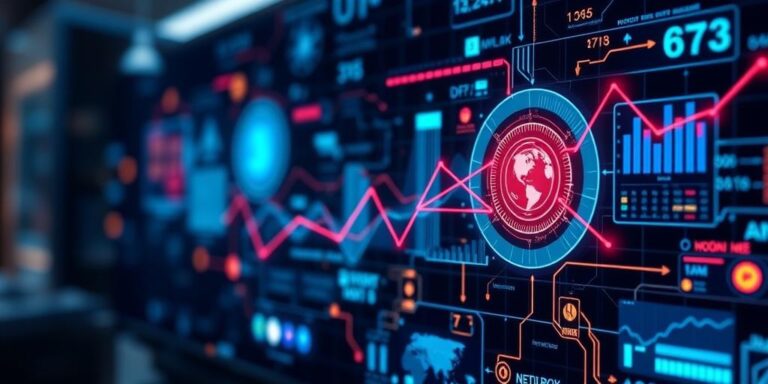Predictive Analytics with IoT: Forecasting Future Trends (2025)
The Internet of Things (IoT) has revolutionized how we interact with technology, generating massive amounts of data from interconnected devices. Predictive analytics leverages this data to forecast future trends, optimize operations, and enable proactive decision-making. This article explores the current state of predictive analytics within IoT and provides insights into emerging trends expected to shape the landscape in 2025.
Understanding Predictive Analytics and IoT
Predictive analytics involves using statistical techniques, machine learning algorithms, and data mining to analyze historical data and make predictions about future events. When combined with IoT, it creates powerful capabilities across industries, including:
- Manufacturing: Predicting equipment failures to minimize downtime.
- Healthcare: Forecasting patient health risks for proactive intervention.
- Retail: Anticipating consumer demand to optimize inventory management.
- Transportation: Predicting traffic patterns to improve logistics and delivery times.
- Energy: Forecasting energy consumption to enhance grid efficiency.
Key Components Enabling Predictive Analytics in IoT
Several key components facilitate the application of predictive analytics in IoT ecosystems:
- Data Collection: IoT devices continuously collect data from sensors, wearables, and other connected endpoints.
- Data Preprocessing: Raw data is cleaned, transformed, and prepared for analysis.
- Machine Learning Models: Algorithms are trained using historical data to identify patterns and make predictions.
- Real-time Analytics: Predictions are generated in real-time to enable immediate action.
- Visualization and Reporting: Insights are presented in a user-friendly format for stakeholders.
Current Trends in Predictive Analytics with IoT
As of 2024, several trends are driving the adoption and advancement of predictive analytics in IoT:
- Edge Computing: Processing data closer to the source reduces latency and improves real-time decision-making.
- AI Integration: Artificial intelligence (AI) enhances the accuracy and efficiency of predictive models.
- Digital Twins: Virtual replicas of physical assets enable simulation and predictive maintenance.
- Cybersecurity: Advanced analytics help detect and prevent security threats in IoT environments.
- Cloud Computing: Scalable cloud infrastructure supports the storage and processing of massive IoT datasets.
Future Trends Expected in 2025
Looking ahead to 2025, the following trends are expected to gain prominence:
- Advanced Machine Learning Techniques: Deep learning and reinforcement learning will improve the sophistication of predictive models.
- Predictive Maintenance: Proactive maintenance strategies will become more widespread, reducing downtime and maintenance costs.
- Personalized Experiences: Predictive analytics will enable personalized recommendations and tailored services based on individual preferences.
- Sustainability: IoT-driven predictive analytics will support sustainability initiatives by optimizing energy consumption and reducing waste.
- Data Privacy and Governance: Enhanced data governance frameworks will address privacy concerns and ensure responsible use of IoT data.
Challenges and Considerations
Despite the potential benefits, several challenges must be addressed to fully realize the value of predictive analytics in IoT:
- Data Quality: Ensuring the accuracy and reliability of IoT data is essential for generating meaningful insights.
- Scalability: Handling the growing volume and velocity of IoT data requires scalable infrastructure and processing capabilities.
- Skills Gap: Organizations need skilled data scientists and analysts to develop and deploy predictive models effectively.
- Integration Complexity: Integrating predictive analytics with existing IoT systems can be complex and require significant effort.
- Security Risks: Protecting IoT devices and data from cyber threats is critical to maintaining the integrity of predictive analytics.
Conclusion
Predictive analytics is transforming the landscape of IoT by enabling organizations to forecast future trends, optimize operations, and make proactive decisions. As technology continues to advance, the integration of AI, edge computing, and other innovations will further enhance the capabilities of predictive analytics in IoT. By addressing the challenges and embracing emerging trends, organizations can unlock the full potential of predictive analytics to drive innovation and create value in the IoT era.




